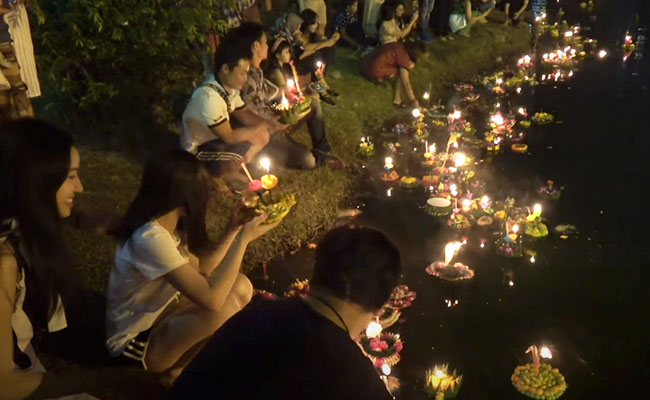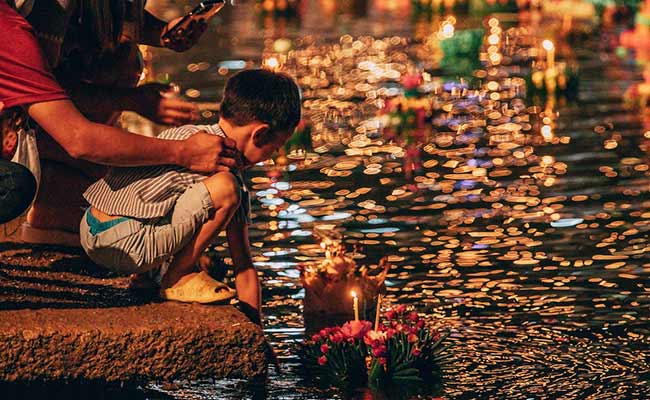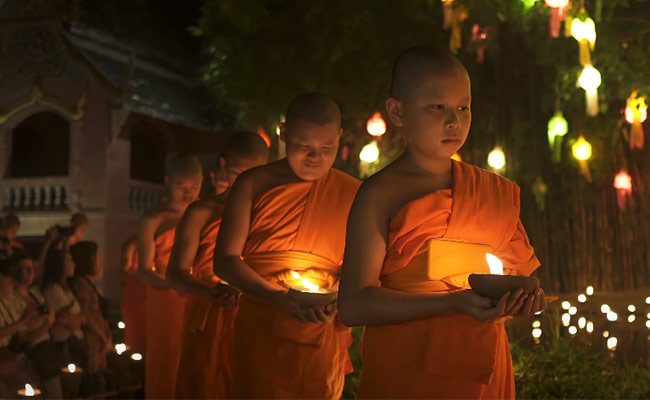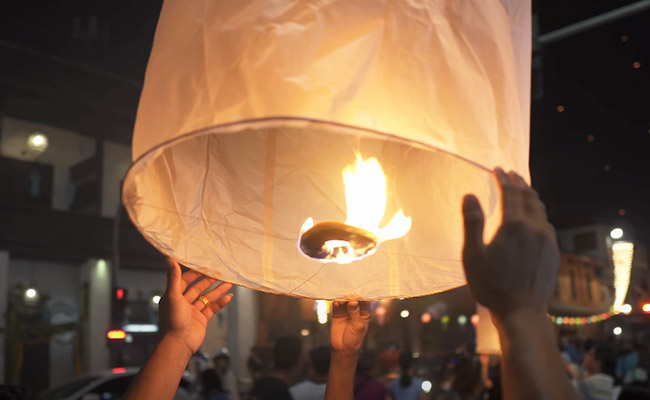Thailand is a country known for its rich cultural heritage, and one of the most spectacular and important events in the Thai calendar is the Loy Krathong Festival.
The Loy Krathong Festival is held annually on the full moon night of the twelfth lunar month (usually in November). It is a celebration of Thai identity, history and beliefs.
The festival is steeped in symbolism and significance, and is one of the most important cultural events in the country. It is a time when people express their gratitude to the goddess of water, Mae Khongkha, who is believed to have brought the Thai people prosperity and good fortune.
Origins and Significance of Loy Krathong
The origins of the Loy Krathong Festival are somewhat unclear, but it is believed to have been celebrated in Thailand since the Sukhothai period (1238–1438). It was during this time that King Ramkhamhaeng introduced the concept of the floating lantern, which has become a central feature of the festival.
The festival is deeply rooted in Thai Buddhism and is a time when people come together to pay respect to the goddess of water and seek her blessings.
Water is an important element in Thai culture, and the festival is a way of thanking the goddess for the water that sustains life.
Water is an important element in Thai culture because Thailand is a country with a rich agricultural heritage, and the availability of water is crucial for the success of agriculture.
In addition to its practical importance, water is revered for its cleansing and purifying properties, and it is often used in religious ceremonies and rituals to symbolize spiritual renewal and purification.
The word “loy” means “to float,” and “krathong” refers to the lotus-shaped container that is traditionally made from banana leaves and decorated with flowers, candles, and incense.
The krathongs are floated on rivers, canals and other bodies of water, and the festival is a time when people make wishes and ask for forgiveness for any wrongdoing.
The festival is also an occasion for families to come together and enjoy the festivities. Children will often make their own krathongs and compete with each other to see who can make the most beautiful one.
The festival is a time when people put aside their differences and come together to celebrate their shared heritage and beliefs.

Thai people let go of the past and wish for a brighter future as they let their krathongs float away.

Kids enjoy the evening festivities.
Phra Mae Khongkha
Mae Khongkha, also known as Phra Mae Khongkha or the goddess of water, is an important deity in Thai mythology and folklore. The history and origin of Mae Khongkha can be traced back to ancient times, when the Thai people relied heavily on water for their survival and livelihoods.
According to legend, Mae Khongkha was a beautiful and benevolent goddess who presided over the waters of the Mekong River. She was said to have the power to bring rain, control floods, and ensure bountiful harvests, making her an essential deity for the Thai people who depended on the river for their agricultural prosperity.
In some versions of the legend, Mae Khongkha is said to have been born as a daughter of the gods and goddesses, and was sent to earth to bring peace and prosperity to the people. In others, she is said to have emerged fully-formed from the waters of the Mekong River, a symbol of the river's life-giving power.
Over time, Mae Khongkha became an integral part of Thai culture and religion, with numerous shrines and temples dedicated to her worship.
The Loy Krathong Festival, which is celebrated in her honor, is one of the most important festivals in Thailand and is a testament to the deep reverence that the Thai people have for Mae Khongkha and her role in their lives.
Today, Mae Khongkha continues to be an important figure in Thai culture and mythology, representing the life-giving power of water and the importance of harmony between humans and the natural world.

Monks take part in a spiritual ceremony on Loy Krathong.
Activities and Celebrations
The Loy Krathong Festival is celebrated throughout Thailand, but the biggest and most famous celebrations take place in Chiang Mai, Sukhothai, and Bangkok.
In Chiang Mai, the festival is celebrated over three days and is known as the “Yi Peng Festival.” This is a time when thousands of floating lanterns are released into the sky, creating a spectacular display of light and color. The lanterns are believed to symbolize the release of bad luck and the welcoming of good fortune.
In Sukhothai, the festival is celebrated in a more traditional manner, with people dressing in traditional Thai costumes and performing traditional dances. The krathongs are floated on the Yom River, and there is a spectacular firework display to mark the end of the festivities.
In Bangkok, the Loy Krathong Festival is celebrated with a grand parade that winds through the streets of the city. The parade features elaborate floats and traditional Thai dancers, and the krathongs are floated on the Chao Phraya River. The festival culminates with a spectacular firework display over the river.
Preparations for the festival begin weeks in advance, with people making and decorating their krathongs. Traditional Thai music and dance performances are held in the run-up to the festival, and there are also food stalls selling traditional Thai snacks and delicacies.
Environmental Impact
As with many large-scale festivals and events, the Loy Krathong Festival has come under scrutiny in recent years for its environmental impact.
The krathongs that are traditionally made from banana leaves and decorated with flowers, candles and incense can be harmful to the environment, as they can pollute the water and harm aquatic life.
To address this issue, many communities have started using biodegradable materials to make their krathongs, such as bread or natural plant materials. In addition, some festivals have implemented measures to collect and recycle the krathongs after the festival.
Despite these challenges, the Loy Krathong Festival remains a significant cultural event in Thailand, and one that is deeply rooted in the country’s history and traditions.

The Banning of Lanterns
Thailand has implemented a ban on the release of lanterns during Loy Krathong celebrations in some parts of the country, including the city of Chiang Mai, due to concerns over safety and environmental impact.
The lanterns can pose a fire hazard and cause environmental damage, and the ban is intended to protect both people and the natural environment.
However, the release of lanterns is still allowed in some other parts of the country during the festival, and many privately organized events still release lanterns on this day.
In Summary
The Loy Krathong Festival is a time-honored tradition in Thailand, and one that is celebrated with great enthusiasm and reverence throughout the country.
It is a time when people put aside their differences and come together to celebrate to show their gratitude to the goddess of water (Mae Khongkha) for the many blessings she has bestowed upon them.
As Thailand continues to evolve and change, the Loy Krathong Festival remains an important reminder of the country’s rich cultural heritage, and the deep connections between its people and the natural world.
Last Updated on



JamesE says
Oct 02, 2023 at 10:24 pm
Paul Haynes says
Oct 01, 2023 at 3:40 am